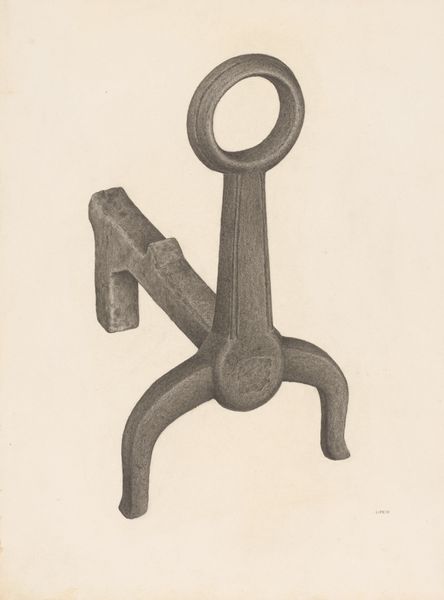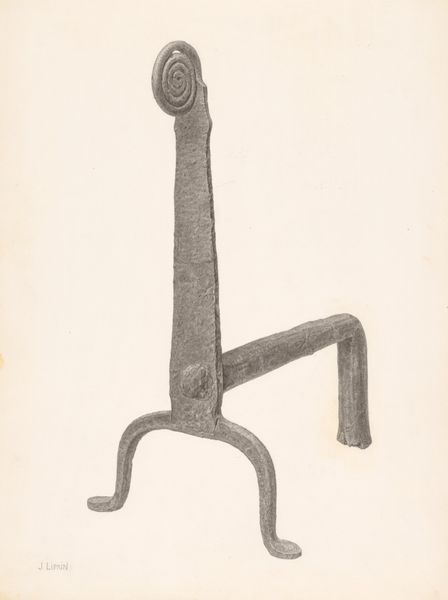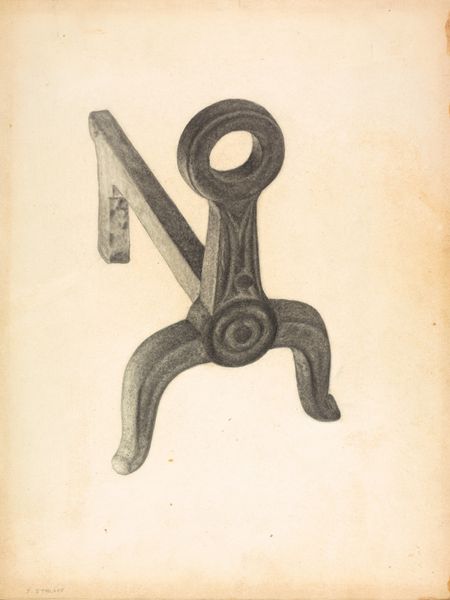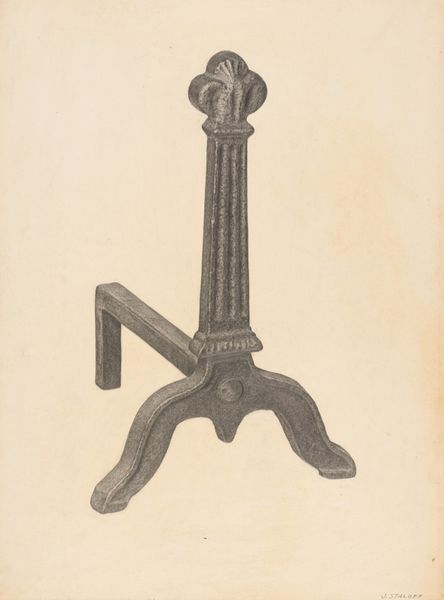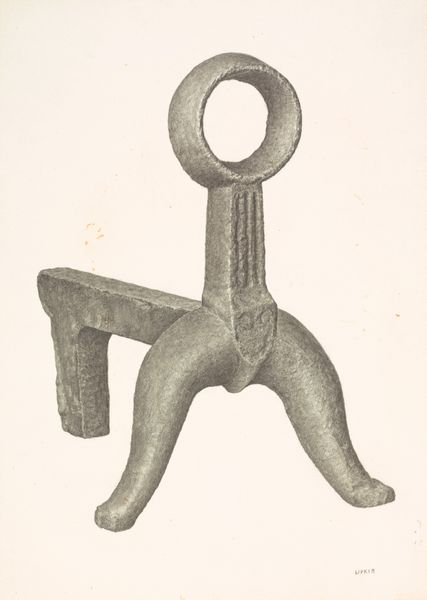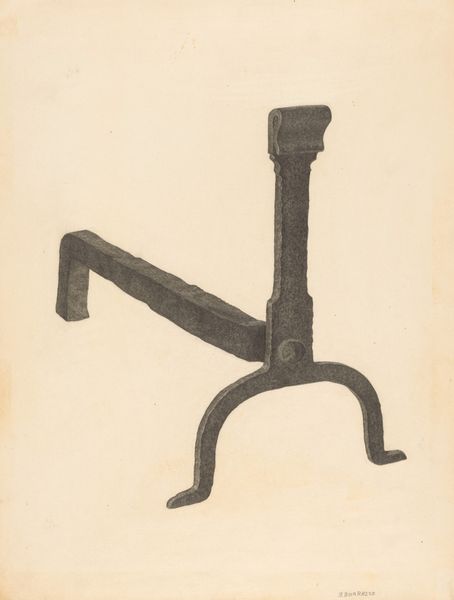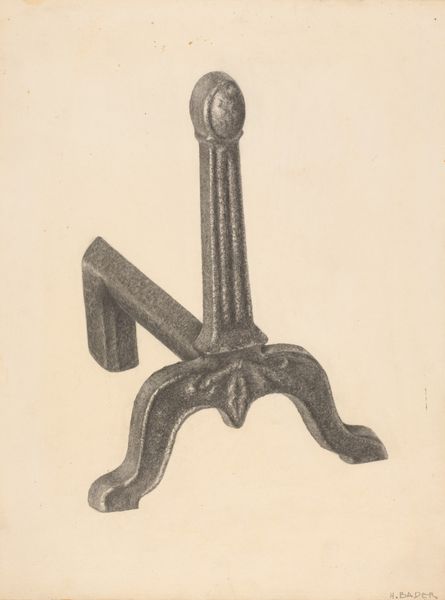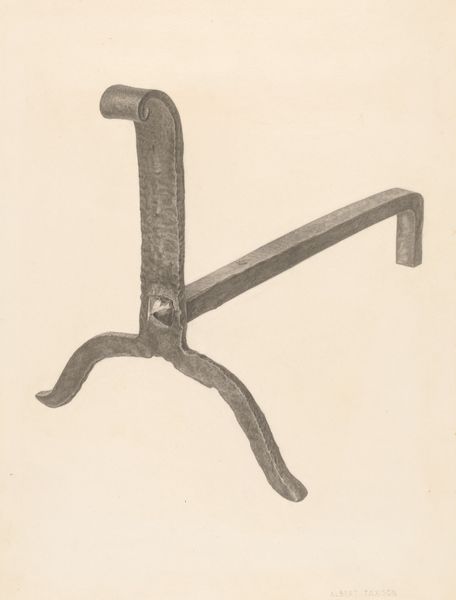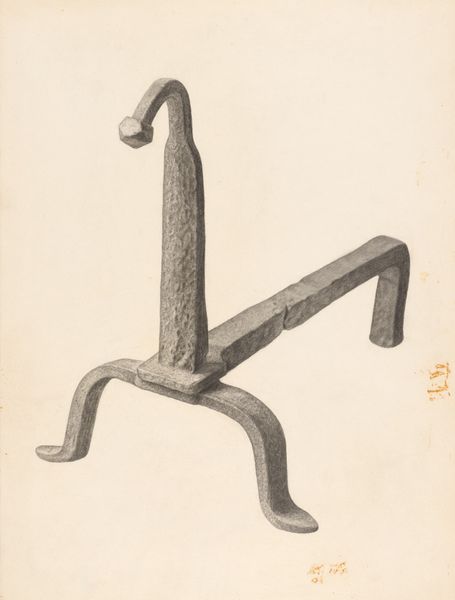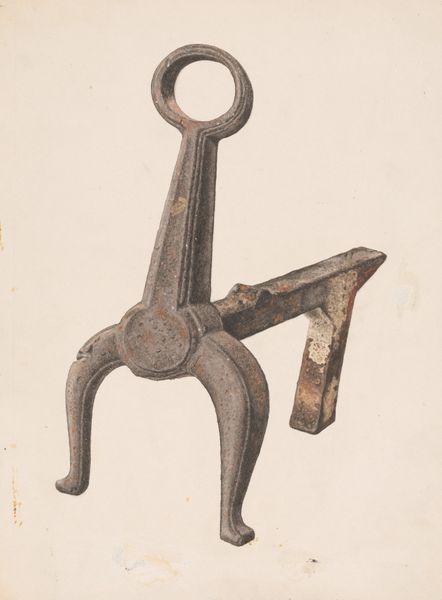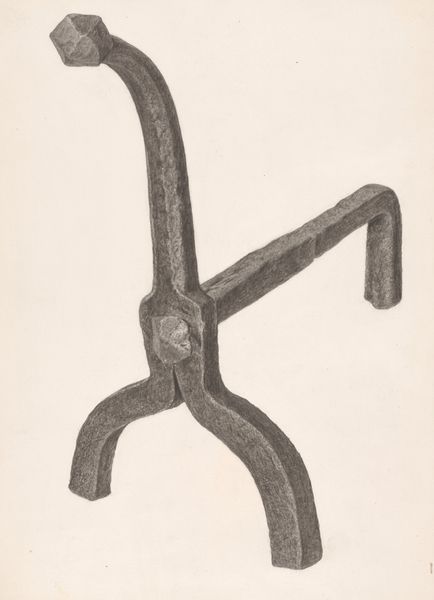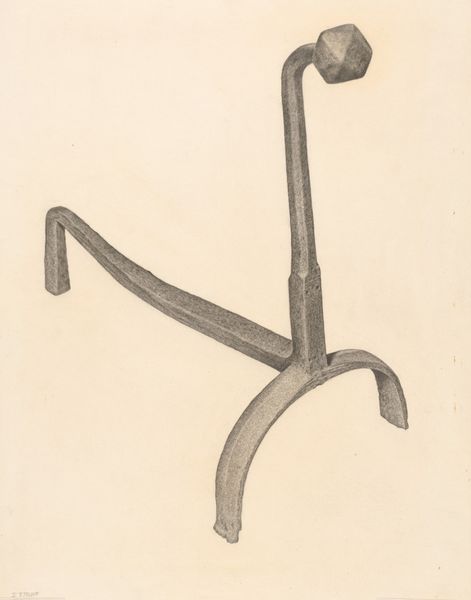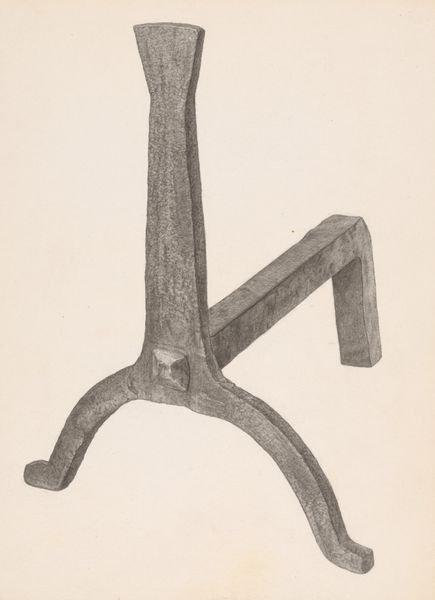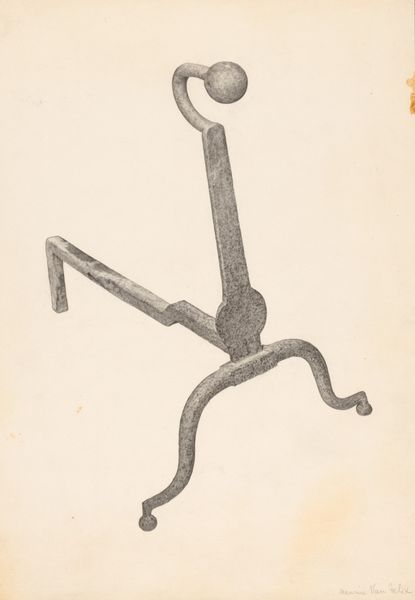
drawing, pencil
#
drawing
#
form
#
pencil
#
realism
Dimensions: overall: 29.2 x 21.2 cm (11 1/2 x 8 3/8 in.) Original IAD Object: 16 3/4" tall
Copyright: National Gallery of Art: CC0 1.0
Curator: Looking at Salvatore Borrazzo's pencil drawing "Andiron", dating from 1935 to 1942, I am struck by its stark simplicity. What are your initial thoughts? Editor: I find the piece melancholy. The grey pencil and somewhat damaged quality of the andiron itself evokes a feeling of obsolescence, perhaps even societal change during that time period. Curator: It is fascinating how Borrazzo chooses to depict a functional, almost mundane object with such care. Andirons, typically used to support logs in a fireplace, become objects of artistic focus. This was during the New Deal era, so how might its status have influenced the creation and reception of this art? Editor: I see your point. The andiron could symbolize domesticity and the hearth, traditional spaces, but considering the era's widespread economic hardship and shifts in domestic roles, the broken segment might suggest a fractured ideal, a yearning for the past while acknowledging the present reality of social unrest and displacement. Curator: Perhaps this ties to Borrazzo’s association with the Federal Art Project. The FAP's aim to employ artists during the Depression emphasized distinctly American scenes, even if rendered through traditional subjects. Does this intersect with current intersectional narratives? Editor: Absolutely. One might examine gender roles: were women increasingly reliant on andiron usage during times when more men had jobs away from the home? Furthermore, looking at socio-economic and regional identities, who would even have owned an andiron, in contrast to marginalized people in rural areas and cities during this economic catastrophe? This all impacts how the symbol is constructed and perceived. Curator: The realism employed heightens this contrast, I think. Borrazzo does not idealize but presents the object almost clinically. He chooses a neutral background, forcing the viewer to consider the andiron without sentimentality, focusing solely on form and texture. Editor: It is also key to note how even his choices of drawing with pencil can impact how gender, race, and other political considerations can shape not just its appearance in form, but how the meaning of that subject can itself be altered. Curator: So, rather than simply a nostalgic image, Borrazzo gives us an image charged with tension—a commentary on the shifting landscape of American life during a period of intense upheaval and anxiety. Editor: It does make one reconsider what it meant to live at a time when home might represent something very different than warmth or security.
Comments
No comments
Be the first to comment and join the conversation on the ultimate creative platform.
